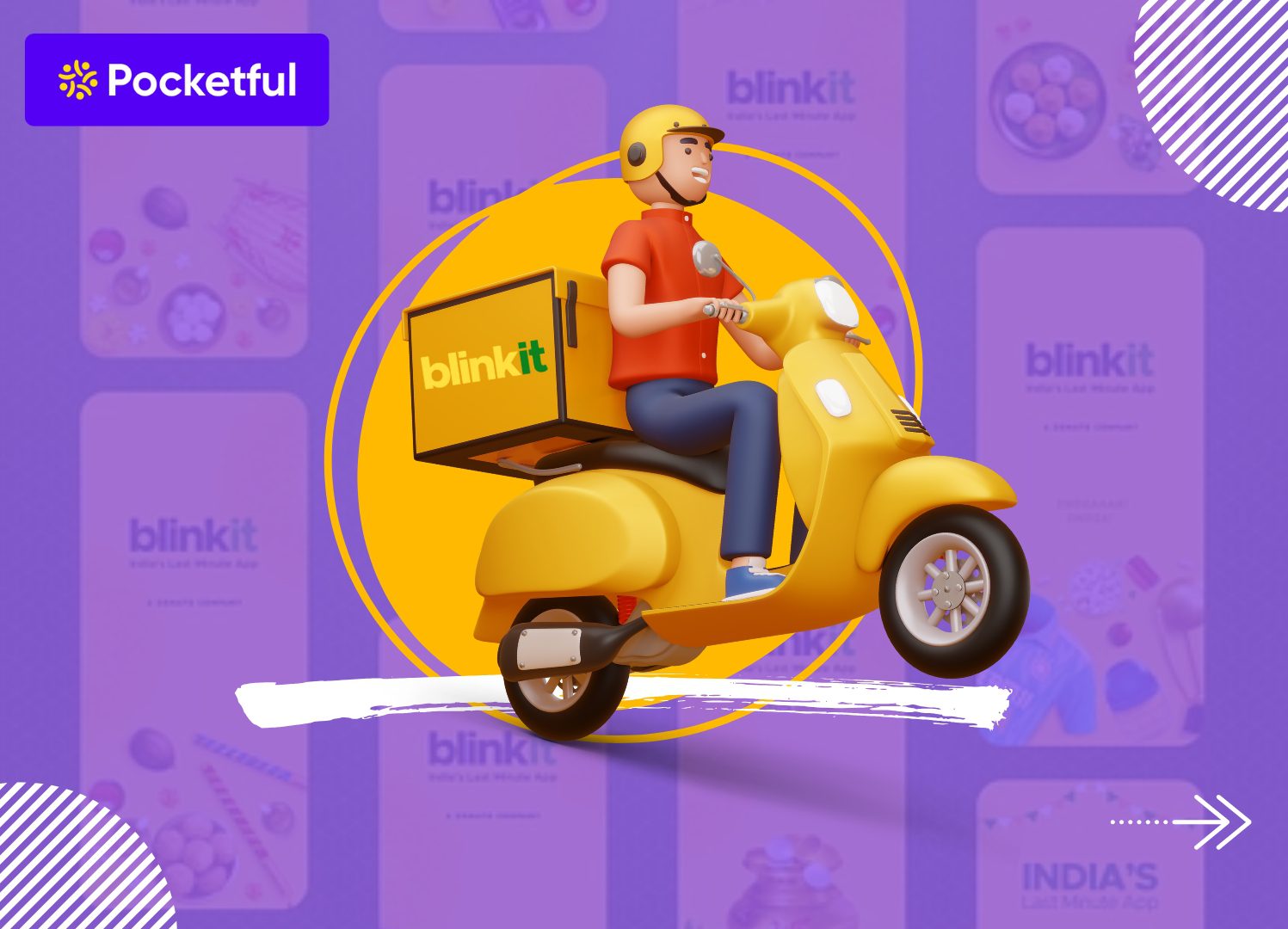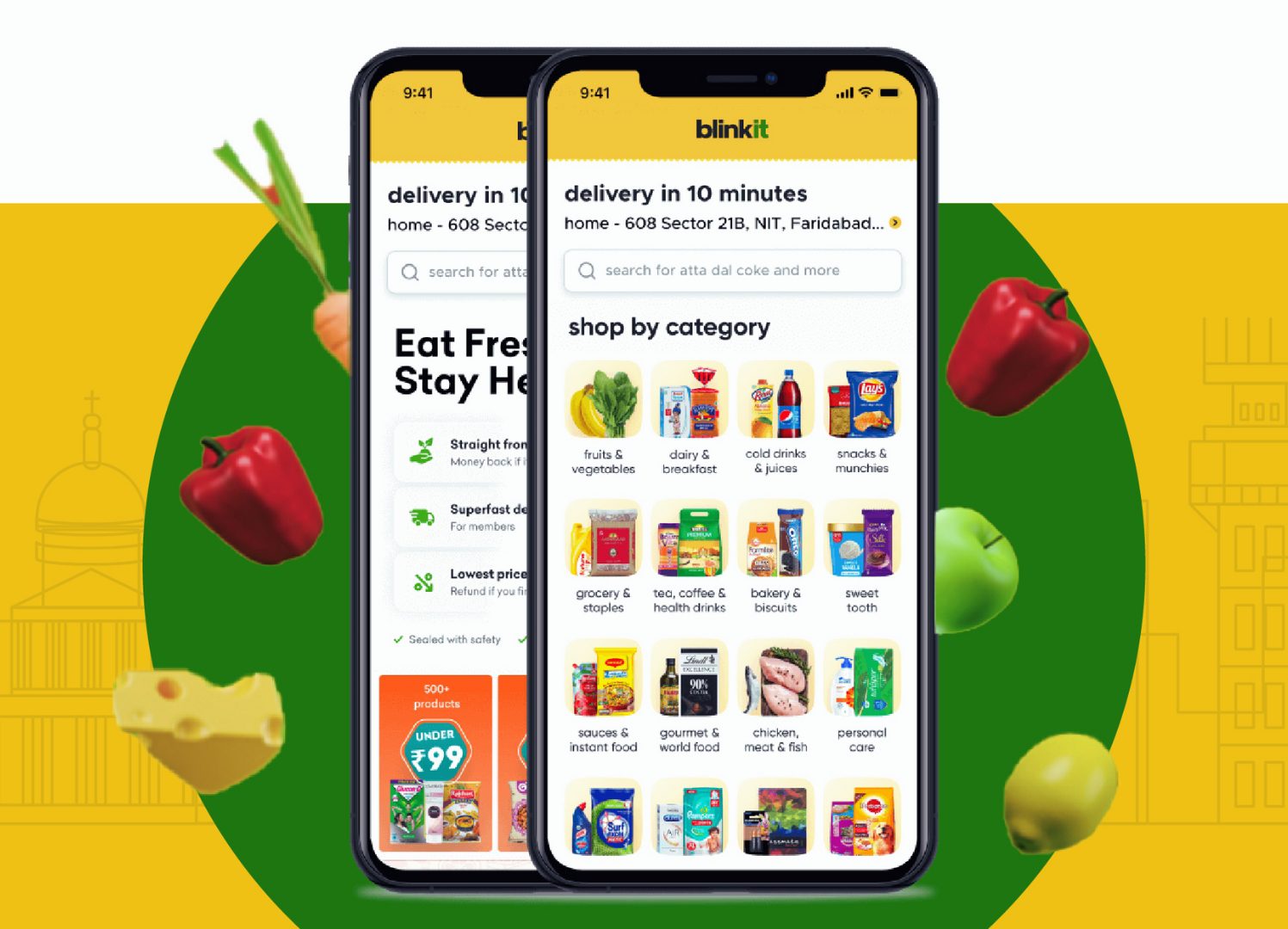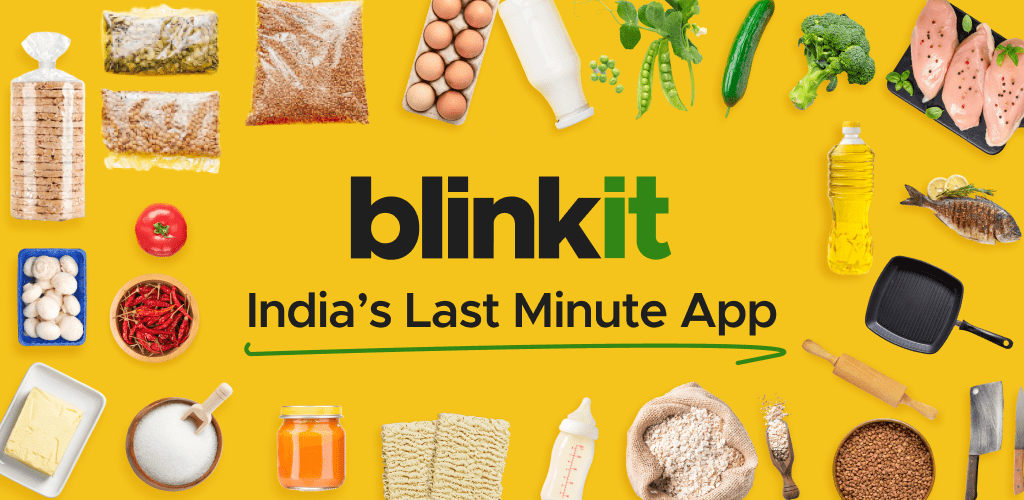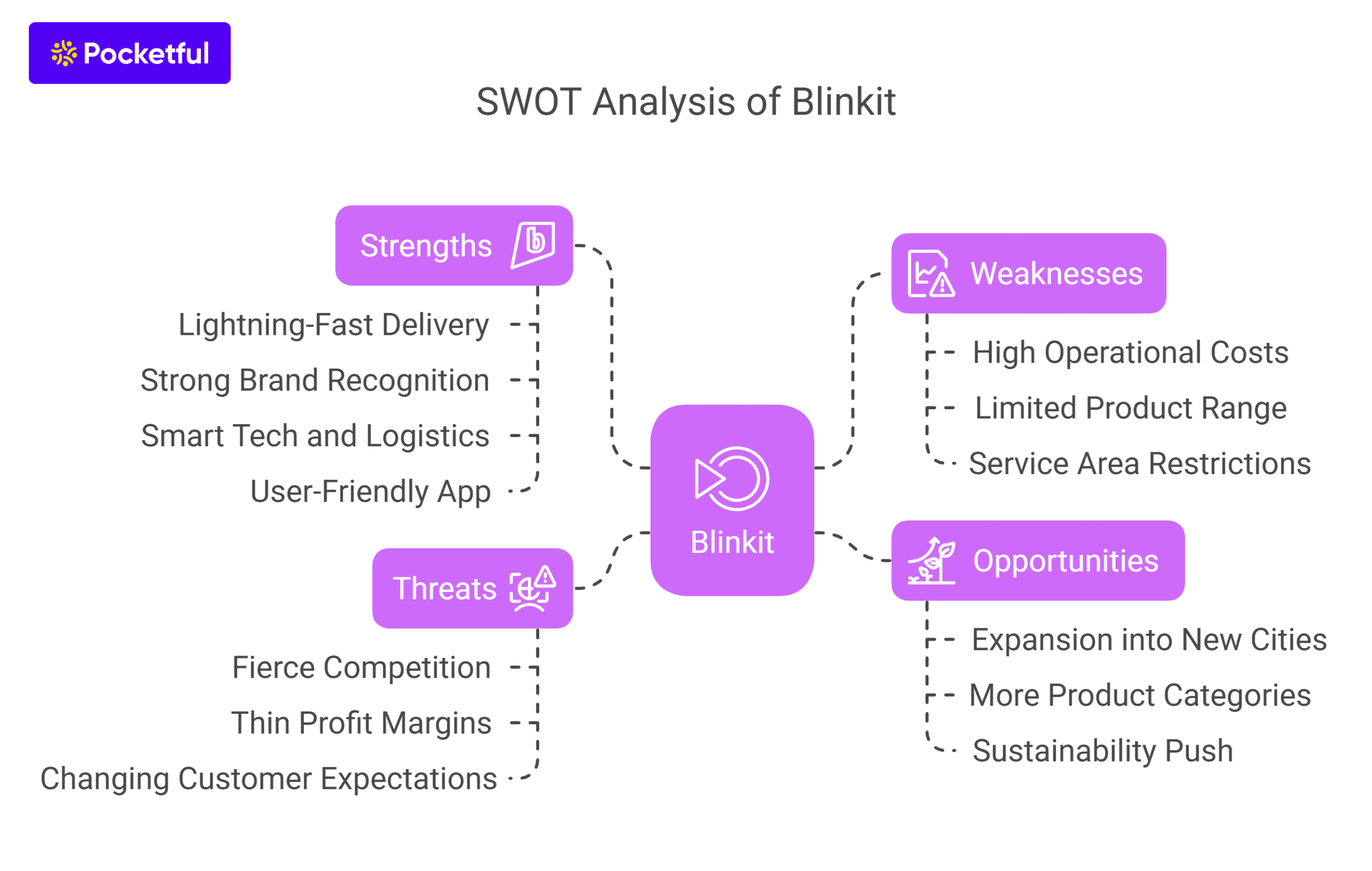| Type | Description | Contributor | Date |
|---|---|---|---|
| Post created | Pocketful Team | Apr-30-25 | |
| Add new links | Nisha | Sep-05-25 |
Read Next
- What Is Quick Commerce? Meaning & How It Works
- Urban Company Case Study: Business Model, Marketing Strategy & SWOT
- Rapido Case Study: Business Model, Marketing Strategy, Financial, and SWOT Analysis
- Trump Tariffs on India: Trade vs Russian Oil
- NTPC vs Power Grid: Business Model, Financials & Future Plans Compared
- Exxaro Tiles Vs Kajaria Tiles
- Adani Power Vs Adani Green – A Comprehensive Analysis
- Blinkit vs Zepto: Which is Better?
- UltraTech Vs Ambuja: Which is Better?
- Tata Technologies Vs TCS: Which is Better?
- Tata vs Reliance: India’s Top Business Giants Compared
- HCL Vs Infosys: Which is Better?
- Wipro Vs Infosys: Which is Better?
- Voltas vs Blue Star: Which is Better?
- SAIL Vs Tata Steel: Which is Better?
- JK Tyre Vs CEAT: Which is Better?
- Lenskart Case Study: History, Marketing Strategies, and SWOT Analysis
- Parle Case Study: Business Model, Marketing Strategy, and SWOT Analysis
- Tata Motors Vs Ashok Leyland: Which is Better?
- Apollo Tyres Ltd. vs Ceat Ltd. – Which is better?
- Blog
- blinkit case study
Blinkit Case Study: Business Model, Financials, and SWOT Analysis

In today’s fast-paced world, convenience isn’t just a luxury; it’s a must. That’s why online grocery delivery services have exploded in popularity, with Blinkit (you might remember it as Grofers) leading the charge. As life gets busier, more of us are looking for ways to save time without compromising on quality.
In this blog, we’re taking a closer look at Blinkit’s journey: the wins, the hurdles, and the technology behind their 10-minute grocery delivery promise. Moreover, we will learn about what makes Blinkit keep going and what it says about where e-commerce is headed.
Blinkit: An Overview
Blinkit didn’t pop up overnight. It all started in 2013 when Grofers was founded by Albinder Dhindsa and Saurabh Kumar, with a focus on making grocery shopping simpler. Over time, they grew beyond groceries, offering everything from household essentials to personal care products.
Their shift from Grofers to Blinkit wasn’t just a name change; instead, it marked a whole new way of thinking. The company moved from regular delivery schedules to an instant delivery model, perfect for customers who don’t like to wait.

At the heart of Blinkit’s operations are dark stores: local, hyper-efficient warehouses packed with products ready for speedy dispatch. Their model depends heavily on smart technology, data-driven logistics, and a hyperlocal supply chain to make those ultra-fast deliveries possible.
Business Model of Blinkit
Here’s how it all works:
1. Dark Stores Are the MVPs
Instead of sourcing your groceries from big warehouses far away, Blinkit uses small local warehouses called dark stores. These mini-warehouses are packed with popular items and are spread all over the city, so whenever you place an order, it’s already close to you.
2. Smart Technology Behind the Scenes
Blinkit isn’t just about fast legs; it’s about fast brains, too. Their systems predict what their customers are likely to order, so dark stores stay stocked with exactly what customers want when they want it. Also, real-time inventory updates mean you don’t end up ordering something that’s out of stock.
3. Delivery
Most deliveries are done on electric vehicles. It’s not just speedy, it’s also a lot more eco-friendly than sending out trucks for small orders.
How Blinkit Makes Money?
Blinkit generates revenue through:
- Delivery Fees: Sometimes you pay a small delivery fee, especially if your order value is small.
- Product Margins: Just like regular stores, Blinkit makes a margin on every item it sells.
- Partnership Deals: Brands sometimes pay Blinkit to promote certain products in the app, like those “featured” snacks you suddenly feel like buying.
Blinkit’s business model is all about thinking small (local warehouses) to deliver big (instant convenience).
Read Also: Zepto Case Study: Business Model, Financials, and SWOT Analysis
Marketing Strategy of Blinkit
Blinkit knows that getting your groceries fast is great, but first, they have to make sure you think of them when you’re hungry, running low on essentials, or just too lazy to go to the store. These objectives are achieved through their high performing marketing team. Their marketing campaigns are all about speed, relatability, and showing up exactly when you need them.

1. Speed is the Focus
Blinkit’s main selling point is its superpower: 10-minute delivery, and they make sure you never forget it. Every campaign, every ad, every social media post reminds you that whatever you need, you can get it faster than making a cup of tea. Their famous tagline? “Everything Delivered in Minutes.” Simple, catchy, and perfectly on-brand.
2. Memes, Humour, and Real Talk on Social Media
Blinkit doesn’t act like a serious company online. Their social media is filled with memes, funny tweets, pop culture references, and jokes with which you can completely relate. They know their audience well: busy millennials, students, young professionals, and their campaigns speak to them.
Some examples:
- Funny tweets about last-minute cravings.
- Relatable memes about running out of snacks at 2 AM.
- Quick polls and questions that start conversations to keep the brand relevant among customers.
3. Influencers That Feel Like Friends
Instead of throwing money at huge celebrities, Blinkit often teams up with relatable influencers who are the ones you feel like you could have a coffee with. Collaborating with local influencers for promotions helps Blinkit establish an instant connection with its clients.
4. Targeted Promotions
Blinkit knows when you’re most likely to crave a quick grocery run, such as just before dinner, late-night for snacks or during a Sunday afternoon. They send well-timed push notifications, app alerts, and discounts to nudge you right when you’re most likely to click “Order Now,” which is a smart and exceptional business strategy.
Read Also: Swiggy Vs Zomato: Business Model, Marketing Strategies, Strengths, and Financials Compared.
Read Also: Blinkit vs Zepto: Which is Better?
Financial analysis of Blinkit
| Financial Metrics | FY 2024 | FY 2023 | FY 2022 |
|---|---|---|---|
| Revenue (₹ crores) | 2,301 | 724.2 | 236.1 |
| Net Profit (₹ crores) | Data not disclosed | (1,078.9) | (1020.1) |
Inference
Blinkit’s revenue numbers have been moving in the right direction. Credit goes to more people jumping on the instant delivery bandwagon (especially in big cities). Blinkit’s sales have grown steadily year after year. Their partnership with Zomato (who now owns Blinkit) gave them a huge boost both financially and strategically. It helped Blinkit access more resources, better technology, and a massive customer base already used for quick deliveries.
Key Highlights
- Gross Order Value (GOV): ₹12,469 crore, which is a huge 93% jump compared to last year!
- Total Orders: They completed 203 million orders, growing by 71% year-on-year.
- Monthly Active Customers: Blinkit now serves around 5.1 million active customers each month, which is a 73% increase!
- Average Daily GOV per Store: On average, each store pulled in about ₹7,97,000 every day
- Number of Stores (as of March 2024): They’ve expanded to 526 stores, adding 149 new ones this year.
- Warehouse Space: Their warehousing capacity hit 4.8 million square feet, growing by 28%. That’s a lot of room for snacks and veggies!
The company posted an adjusted EBITDA loss of ₹103 crore, which is about 15.7% higher than the ₹89 crore loss they reported in Q3 last year. To compare, Blinkit’s loss in the previous quarter (Q2 FY25) was much lower, just ₹8 crores.
The bump in losses isn’t too surprising either, as the quick commerce space is growing fast, and Blinkit faces tough competition, from players like Zepto, Swiggy Instamart, Flipkart Minutes, Bigbasket now, JioMart, and even Amazon getting ready.
Read Also: D Mart Case Study: Business Model and Marketing Strategy
SWOT Analysis of Blinkit

Strengths
- Lightning-Fast Delivery: Blinkit’s biggest flex is its promise of delivering essentials in under 10 minutes. That’s a serious game-changer for busy, convenience-loving customers.
- Strong Brand Recognition: After rebranding from Grofers, Blinkit made sure everyone knew its name, especially through smart social media campaigns and catchy promotions.
- Smart Tech and Logistics: Behind the scenes, Blinkit runs on the latest technology, which includes real-time inventory tracking, AI-powered demand prediction, and optimized delivery routes.
- User-Friendly App: Their app is easy to navigate, quick to recommend your favourite things, and packed with a wide variety of products.
Weakness
- High Operational Costs: Superfast deliveries aren’t cheap. Setting up multiple dark stores and maintaining a large delivery fleet burns cash.
- Limited Product Range: Compared to full-fledged grocery stores or hypermarkets, Blinkit’s product variety can feel a bit limited, especially in non-metro areas.
- Service Area Restrictions: Instant delivery works best in big cities. Expanding to smaller towns without losing speed is a real challenge.
Opportunities
- Expansion into New Cities: There’s still a huge untapped market in Tier 2 and Tier 3 cities if Blinkit can crack the logistics puzzle.
- More Product Categories: Blinkit could start delivering other things too, like pharmacy items, bakery items, quick bites, flowers, etc.
- Sustainability Push: Eco-friendly delivery methods like electric bikes and green packaging could win over today’s environment-conscious customers.
Threats
- Fierce Competition: The grocery delivery war is heating up, with players like BigBasket, Zepto, and even Swiggy Instamart fighting for the same customers.
- Thin Profit Margins: Fast delivery models are expensive, and profits can be razor-thin if costs aren’t carefully managed.
- Changing Customer Expectations: Today, it’s 10 minutes. Tomorrow, people might expect groceries in 5 minutes. This can be harmful to the delivery person as keeping up with rising demands could get tricky as well as risky.
Read Also: Zomato Case Study: Business Model, SWOT Analysis, and Financials Explained
Conclusion
Blinkit’s journey from Grofers to a 10-minute delivery giant shows just how important it is to stay flexible and keep the customer at the heart of everything. By embracing new technology, rethinking logistics, and staying focused on user experience, Blinkit isn’t just keeping up; they’re setting the pace. As the battle for instant delivery heats, the company’s ability to innovate, adapt, and keep customers at the heart of everything they do will decide how far they can go.
Frequently Asked Questions (FAQs)
What is Blinkit?
Blinkit (formerly Grofers) is a company that offers services to deliver groceries and other essentials to your doorstep, usually in 10 minutes or less!
How does Blinkit deliver so fast?
They have small local warehouses (called dark stores) scattered across cities, so your order is packed and sent from a spot close to you.
What can I order on Blinkit?
Almost everything you’d find at a neighbourhood grocery store — fruits, veggies, snacks, dairy, cleaning supplies, personal care items, and more.
Where is Blinkit available?
Right now, Blinkit mainly operates in big cities and metro areas across India and they’re expanding fast.
Is there a delivery charge?
Sometimes! Small orders might have a delivery fee, but bigger orders often get a free delivery.
Disclaimer
The securities, funds, and strategies discussed in this blog are provided for informational purposes only. They do not represent endorsements or recommendations. Investors should conduct their own research and seek professional advice before making any investment decisions.
Article History
Table of Contents
Toggle